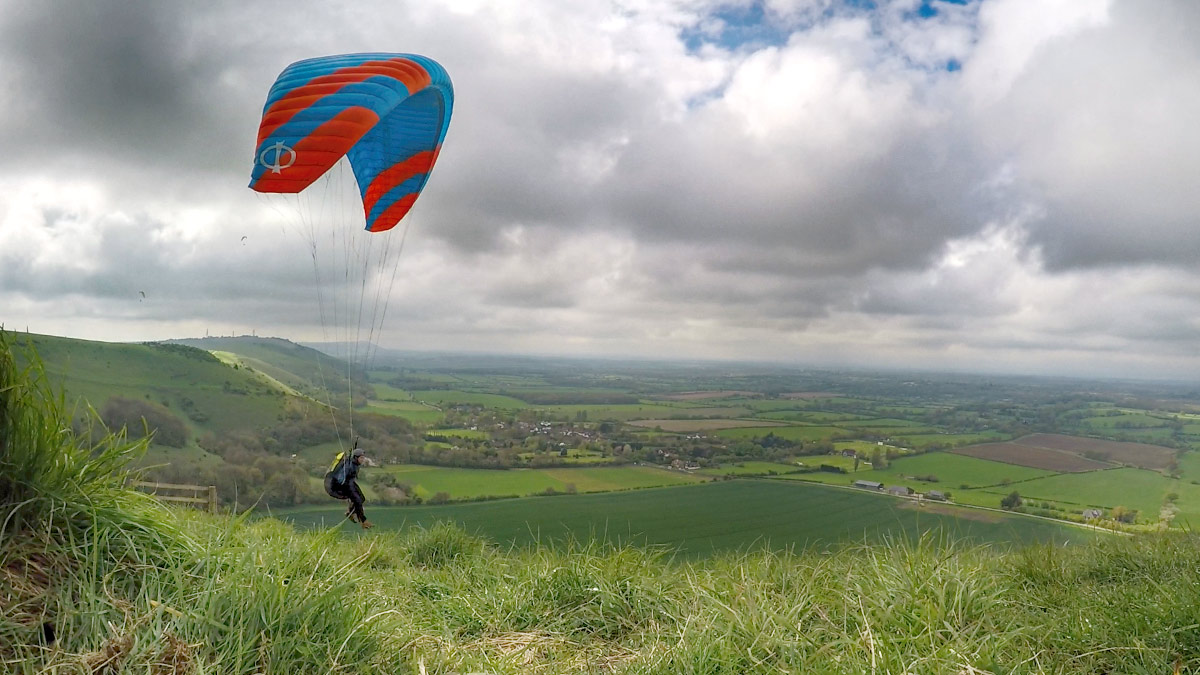
Phi burst onto the scene last year with experienced designer Hannes Papesh at the helm, supported by testing ace Mike Kung and a highly motivated team with a fresh approach. They surprised pilots by announcing three EN A wings in their range. We recently reviewed the SYMPHONIA, a ‘super-high A’ wing with fantastic handling. The SONATA is their wing for high-flying students and graduates – what we’d call a First wing.
A simpler schooling glider (FANTASIA) is planned for the basic training phases (where your instructor would prefer you to be rather closer to the ground and not have modern glide performance available to fly you across the road, down the valley, and into trouble). Indeed that you can do on the SONATA. During my testing I easily reached cloudbase, and on another day thermaled away from a hill of hopeful soaring traffic and went XC. The performance is hidden, you don’t feel the pull or power it is generating because it’s somehow cleverly absorbed, leaving you with a calm and simple aircraft that does a great job of keeping you safe.
Phi SONATA: Construction
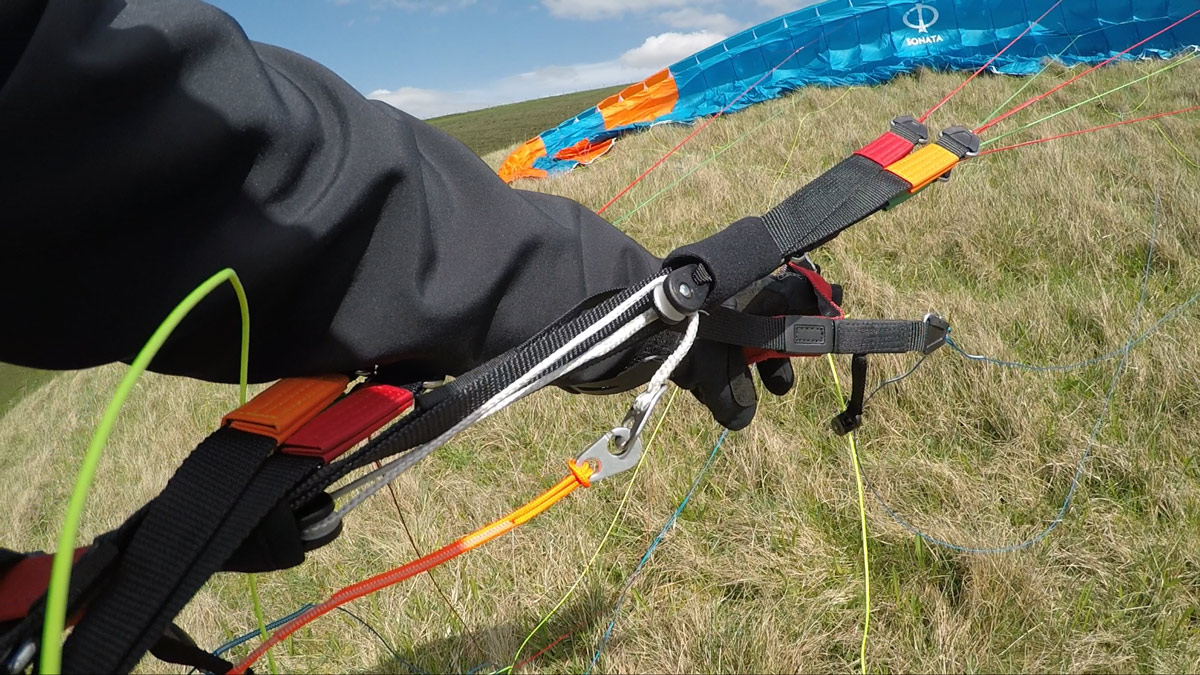
The risers designed with an emphasis on being easy to handle and durable, which is important for new pilots, rather than the more aerodynamic but fiddly thin risers seen on most higher classed wings. The colour coordinated lines make the layout obvious, and the big ears risers stand out to each side. The brakes are soft, small, and kept in place by neat magnetic keepers.
All the lines are sheathed, but all together they make a small stack as the rigging is minimal with only 2 A, 2 B and stabilo, 2C and brake per side.
Dominico 30D is a sturdy, durable fabric chosen to make the SONATA last a long time. When combined with the detailed internal reinforcing I have confidence that this wing will outlast your personal progression. This is when the second benefit of this approach becomes apparent – because it will have a good reputation, and will still fly well, you’ll be able to get a good part-exchange for it, or resell the wing to a large group of beginner pilots and paragliding schools.
Because it’s intended for schools, this wing also has a serious price advantage over the higher models like SYMPHONIA, so if you’re on a budget you might consider starting here.
Phi SONATA: On the ground
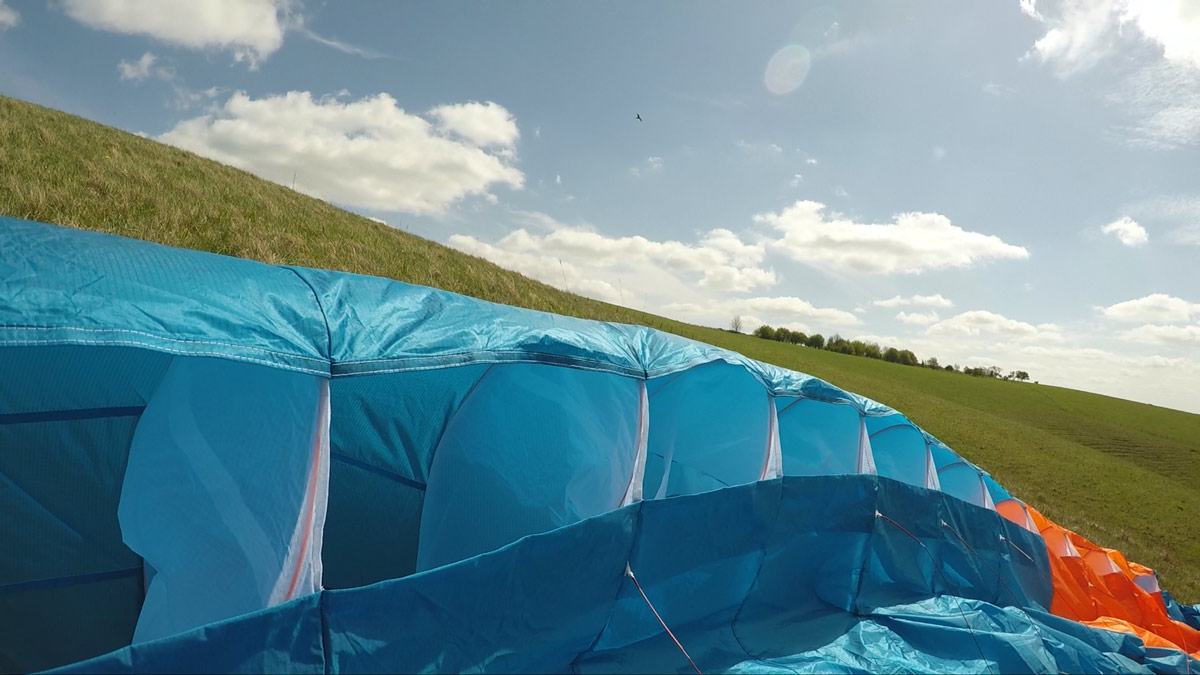
Regarding the tendency to rise off the ground by itself, the Sonata has a better restraint than its ‘big brother’ the Symphonia. It can be launched in stronger winds without needing the A's (great for control in strong stuff, you can pin it on the rear risers until the last moment). In the lighter winds it will drop back down to the ground from 45 degrees, correcting bad pullup technique by calmly resetting the wing. I think the balance is just about perfect for this class. With a little pull, it comes up and stops.
A minor aspect I noticed is that you must move quickly with the wing if it tips towards a wingtip. It did not seem to assist the pilot much by returning to centre. However, with a little input it is very simple to keep overhead.
On the launch run the natural restraint means it does not overshoot but prefers to sit a few degrees behind the vertical, so you need to keep running in light launches. On the steeper slopes, it waits for you a little, it won’t pull you off the hill.
Overall the ground handling is very simple.
Phi SONATA: Handling
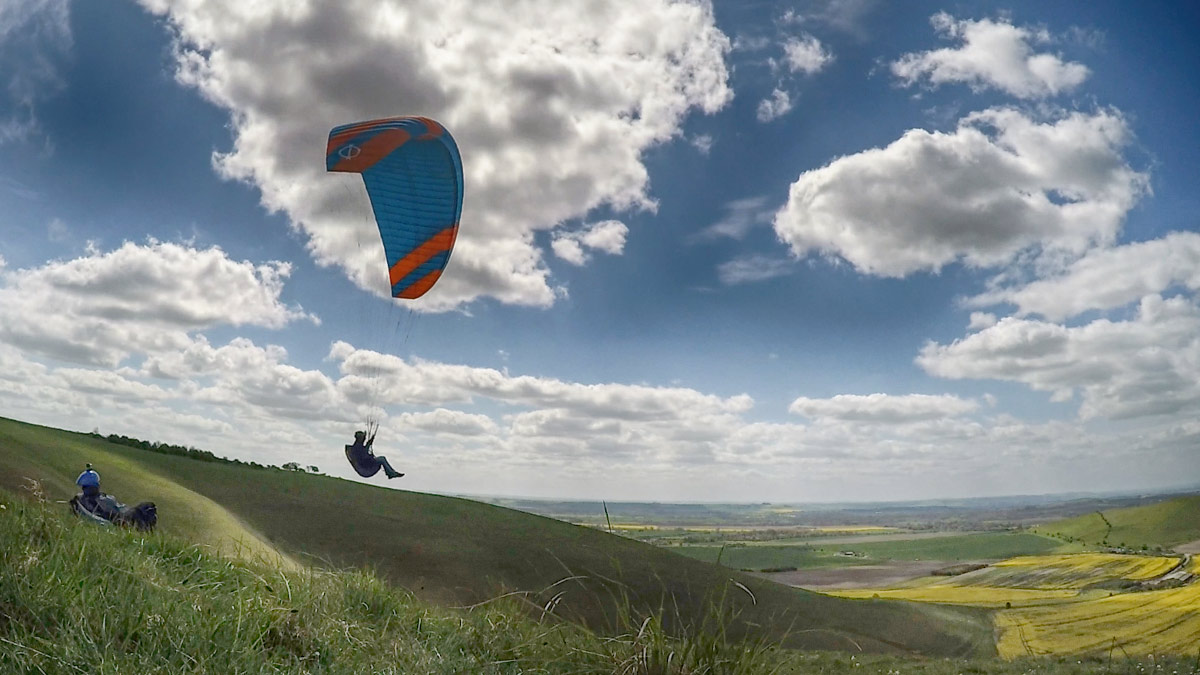
The brakes engage fairly high, but it has a long brake travel that doesn’t build up power, producing a forgiving turn that doesn’t require precise inputs. You might think I’m saying ‘between the lines’ that this is a dull grinding turn with no responsiveness. Quite the opposite. The turn is pleasing, just low power in terms of its effect on the glider energy. I enjoyed thermaling and was able to stay close to the higher class wings I was flying with. The turns are quite adequate and reasonably responsive, requiring no outside brake to catch the energy.
I also had no need to dampen surges in turbulence – the SONATA remains overhead. Gusts knock the wing slightly back or occasionally set it on a new course, and it always returns without diving.
You can build up a moderate pitch with mistimed inputs but the behaviour is mild and it dampens out quickly. The feedback is low, you don’t feel much about the air around you, which is ideal for the class. Most of my flying in thermals was achieved using logic, not feeling.
Phi SONATA: Safety
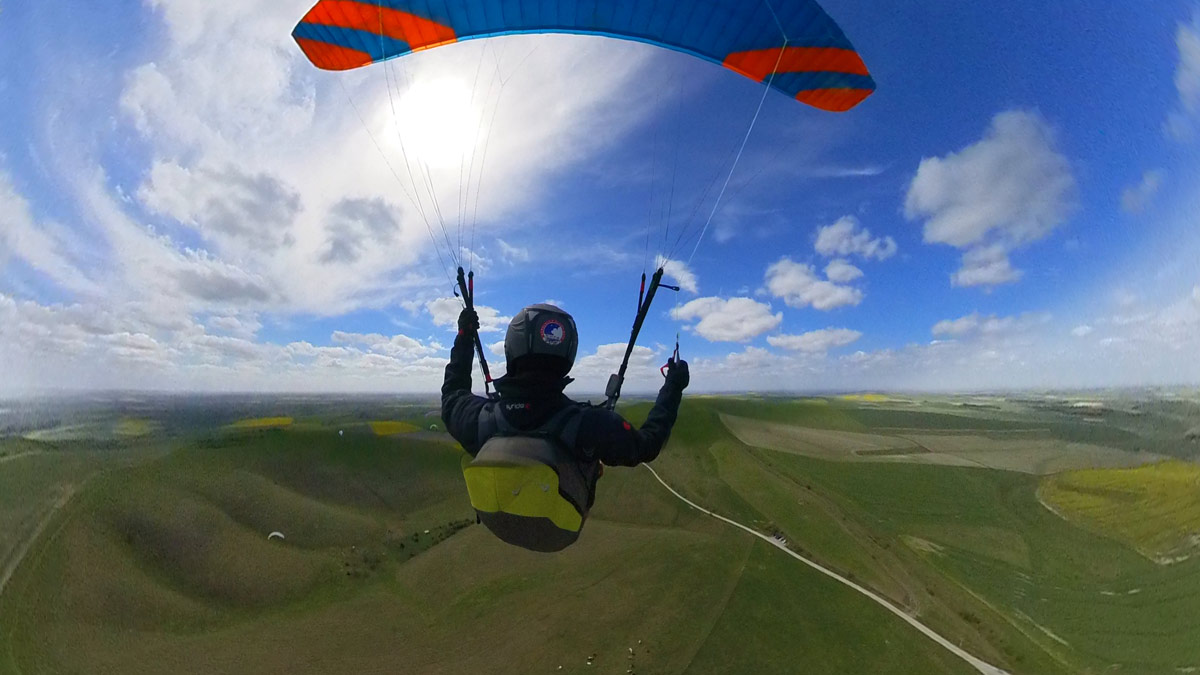
You can’t get much safer than this. The EN test pilots must have loved this wing – it’s like floating on a holiday lilo when doing induced collapses. ‘Extreme’ doesn’t come into the description: every move I tried hardly upset the wing’s balance, and it returned without building up energy.
Instructors will love the stall resistance – you can hold the brakes down at the seat for a long time and not get a stall. When it does go it is soft, slow, and utterly predictable.
It also has an amazing ability to absorb turbulence.
Phi SONATA: Speed
Trim speed seemed standard for the class. It has a simple-to-operate speedbar, and yes it increases the speed (perhaps 8km/h). Due to the minimal line consumption the drag is optimised, but there’s no escaping the effect of the large lifty aerofoil – you’ll not be winning a race into wind. Most pilots I know in this class use their speedbars a few times in a year. It’s enough to get you out of trouble. If you’re planning on doing lots of accelerated flying you want to be looking higher up in the PHI range.
Phi SONATA: Who’s it for?

The SONATA is perfect for pilots leaving paragliding school who want maximum security without compromising on the ability to get high and in time, go far. It’s also suited to school instructors wanting a forgiving modern design that a broad range of students can master. Possibly for pilots who have limited airtime over the past few years and want to downgrade to a wing that will simplify the pilot demands and will tolerate mistimed input while being super easy and comfortable wing to fly. Low energy freedom!
I wish I’d had this in the early days of paragliding instruction. It would have spared me the grey hairs. Then again, my students would have flown away from the hill far too easily!
Find out more about the PHI SONATA
Want to see more?
There's no better way to support our efforts than buying kit from us. We'll ensure you get great service! Choose from our huge range AND enable us to produce more videos and articles to benefit the freeflight community.
Phi Sonata: Review videos
For more insight into the design, check out our interview with Hannes Papesh.

